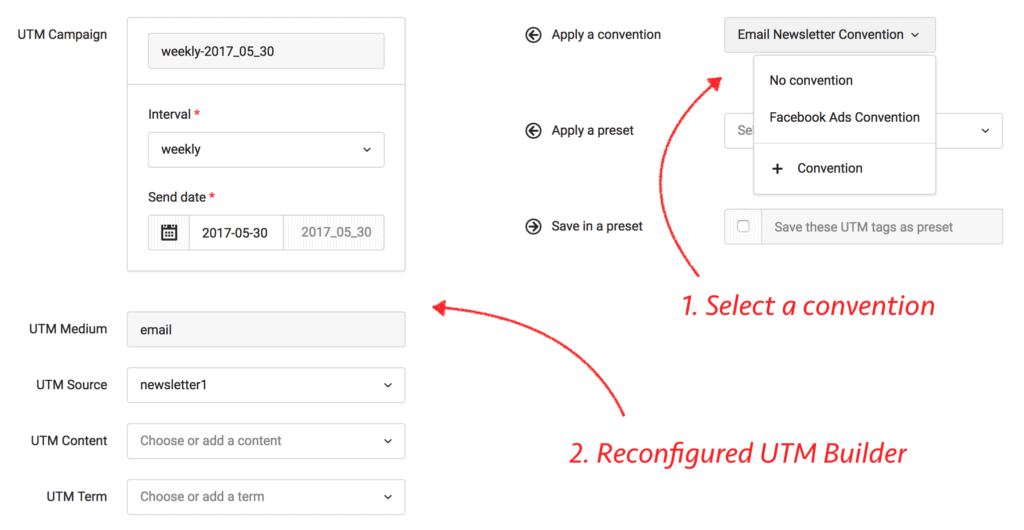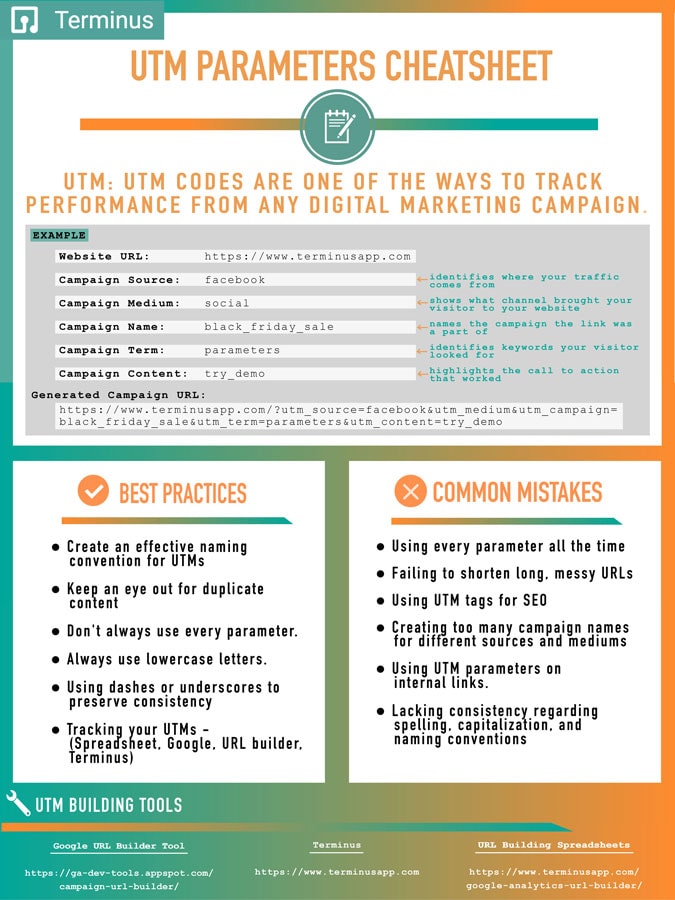The best practices for naming and managing UTM parameters focus on consistency, clarity, and proper usage to ensure accurate tracking and reporting of marketing campaigns.
Key best practices include:
- Use UTM parameters only for external traffic sources, not internal links, to avoid skewed session data.
- Enforce all lowercase letters in UTM values because Google Analytics is case-sensitive; for example,
facebookandFacebookare treated as different sources. - Use hyphens (-) to separate words within UTM values rather than underscores (_) or spaces, as hyphens improve readability and consistency.
- Establish and document a standardized naming convention for all UTM parameters across teams to maintain consistency and avoid fragmented data.
- Order UTM parameters consistently, typically in the order:
utm_source,utm_medium,utm_campaign,utm_term, andutm_content, to ensure important data is captured even if URLs get truncated. - Use a UTM parameter builder or spreadsheet to generate and track UTM URLs, which helps avoid duplication and maintains a historical record of used parameters.
- Create unique UTM parameters for each marketing material and tactic to enable granular tracking and analysis.
- Avoid spaces in UTM parameters since spaces convert to
%20in URLs, complicating tracking; prefer hyphens or underscores when needed. - Test UTM-tagged URLs before deployment, including using test tags to filter out test traffic from analytics.
- Avoid overusing custom or non-standard UTM parameters without centralized documentation and governance to prevent confusion and data fragmentation.
- Integrate UTM data with CRM or sales systems to connect campaign performance to business outcomes beyond just clicks or sessions.
An example of an advanced, structured campaign parameter might look like this:
utm_campaign=product_launch-us-october_2021-crypto_invest
This encodes campaign type, country, launch date, and target audience in a consistent, readable format.
In summary, the core principles are to be consistent, use lowercase and hyphens, track only external campaigns, document your conventions, and use tools to manage UTM parameters effectively. This approach ensures clean, reliable data for marketing performance analysis.





